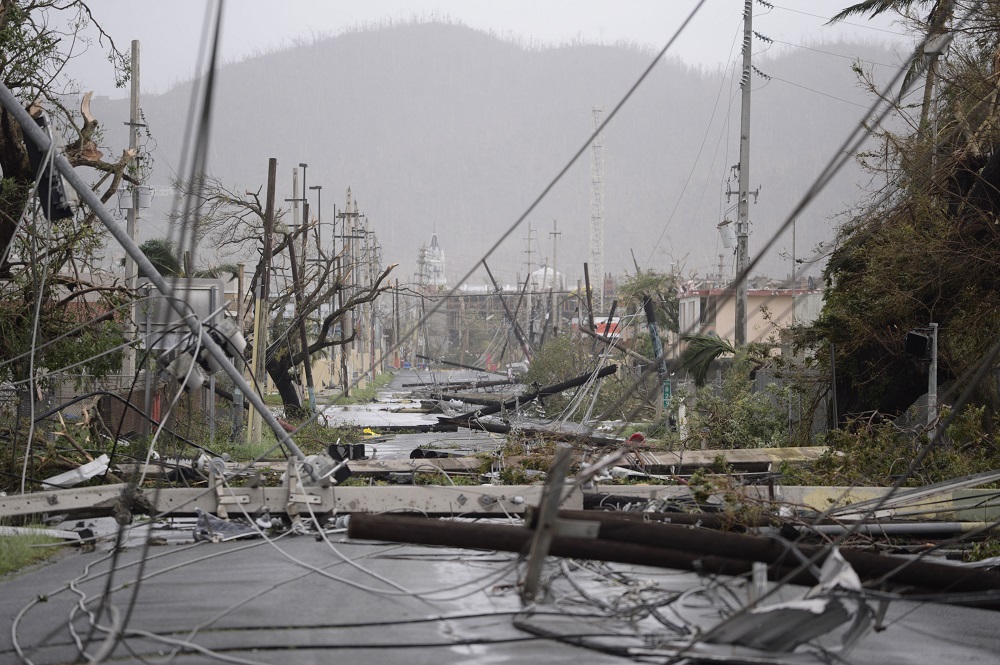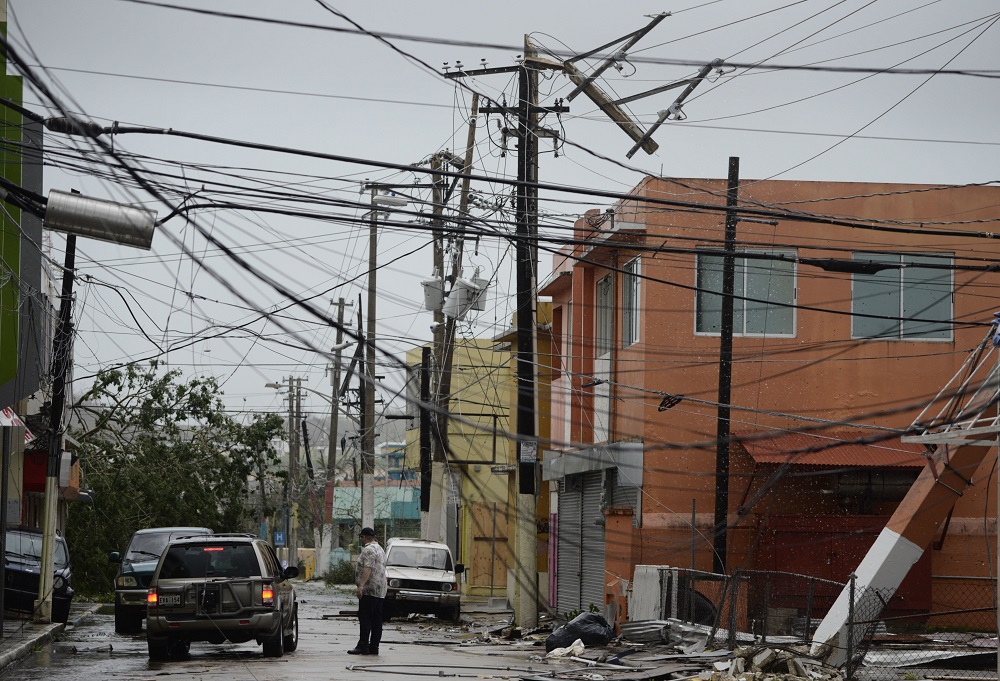Puerto Rico’s electric infrastructure: A ‘perfect storm’ for destruction

On September 20, Hurricane Maria hit Puerto Rico, the first category 4 hurricane to do so since 1932, and knocked out all electric power on the island. Hurricane Irma, which had passed by the island on September 7, caused outages for over 1 million residents.
According to the mayor of Puerto Rico, it could take four to six months to restore electricity on the island.
The power infrastructure on Puerto Rico was already vulnerable to damage before the storm, and faces many barriers to recovery in the coming weeks. As part of Puerto Rico’s overall economic difficulties, the Puerto Rico Electric Power Authority (Prepa), which provides electricity for the whole island, declared bankruptcy this past July, after accruing a total of $9 billion in debt.
The company is dependent on importing oil for power plants to generate electricity, and some of its current financial difficulties both caused and were caused by an inability to pay for fuel in 2014. Prepa had already said it would require $4 billion to repair aging infrastructure, and make the island more self-sufficient, before this latest disaster. The electric infrastructure is known for higher than average rates, poor maintenance, and slow recovery times.

Efforts to save money have resulted in lapses in maintenance, as the head of San Juan think tank, Center for New Economy, Miguel A. Soto-Class says: “A lot of the reasons power has gone out is that PREPA has not been trimming the trees on power lines”.
All of these issues made Hurricane Maria particularly devastating, and will dramatically impact recovery. Puerto Rico is already struggling economically, and there are worries that the damage from the storm and lack of electricity will take the island further into debt. Similarly, as Prepa is already bankrupt, they do not have the funds for a massive recovery, much less upgrading power plants and other infrastructure. These same struggles have led to Prepa losing 30% of their employees since 2012 – especially linemen, who will be in high demand for recovery in the coming months.
Already, as repairs were made in between hurricanes, there was a labor shortage, with the existing linemen union blocking efforts to bring in emergency workers, and an electricity black market springing up in response to the shortage. As they attempt to restore power, the dependence on imported oil will also have extended impacts. The Coast Guard closed all ports on Puerto Rico due to Maria, and the damage and recovery time needed for those facilities has yet to be seen.
Sources and Further Reading:
Hurricane Maria: Whole of Puerto Rico without power – BBC
Puerto Rico’s power company was already bankrupt. Then Hurricane Maria hit. – The Washington Post.
Hurricane Maria Cuts Electricity, Triggers Flooding Across Puerto Rico – NBC News
Hurricane Maria: 100 percent of Puerto Rico without electricity – ABC
Puerto Rico’s Power Authority Effectively Files for Bankruptcy – The New York Times
Hurricane Irma left nearly 1 million Puerto Ricans without power – and it could be months until they get it back – Business Insider
Puerto Ricans turn to the black market for power after Hurricane Irma – The Daily Beast
Ports Shut in Puerto Rico, USVI as Hurricane Approaches – Maritime Executive
